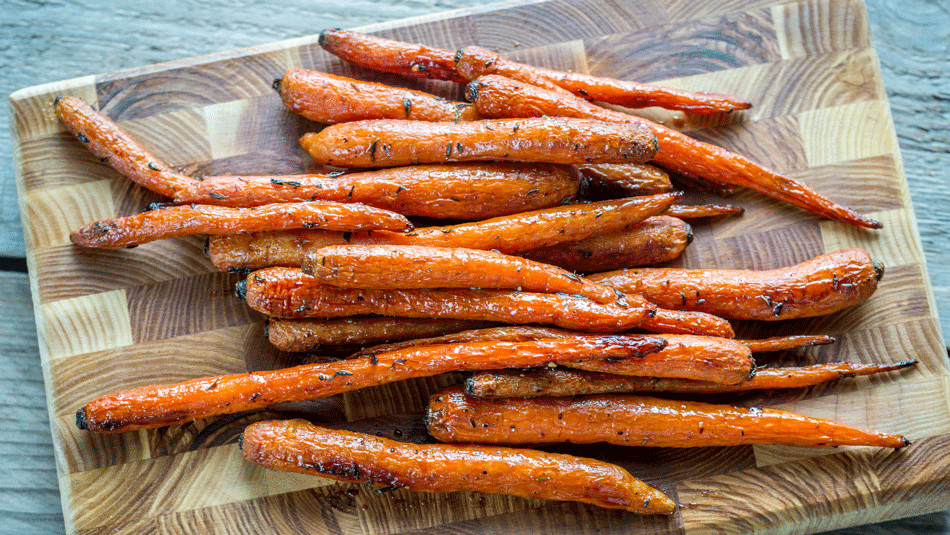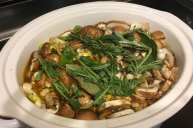If you're trying to eat healthier this year, you might find yourself bombarded with information. Go vegan! Only eat raw foods. Eat more vegetables than proteins. Skip the carbs...no wait, go low-carb not no-carb! It can be overwhelming, and very confusing. To make matter worse, every few years the pendulum swings from low- to high-fat diets, with carbs, meats, and vegetables caught up in the middle.
Videos by Wide Open Country
There's one thing that every single diet agrees upon - eat lots and lots of vegetables. It seems you simply can't go wrong if your plate is filled with more vegetables than proteins and grains. But, should you eat those vegetables raw to preserve their nutrients? Or, should they be cooked to unlock them?
The Argument for Raw Food
Many people think that cooked food has fewer nutrients than fresh food. This can be true in the case of water-soluble vitamins, like folic acid and vitamins B or C. Unlike fat-soluble vitamins (like vitamins A, D, or K) that are absorbed and stored by the body, water-soluble vitamins dissolve in water and are eliminated in urine. That means we need a constant, daily supply of these vitamins.
This type of vitamin also has consequences when cooked. Since these nutrients are dissolved in water, that means they could be lost when cooked. Herein comes the argument for raw food - if you eat raw vegetables, then you won't lose any nutrients during the cooking process.
This argument is totally true if you're blanching foods and throwing out the cooking water, but if you're repurposing the water as vegetable stock or using it to make a soup, then the nutrients remain locked into the liquid.
Why Some Vegetables are Healthier When They're Cooked
On the flip side of the spectrum, the same thing that raw-food enthusiasts are afraid of actually helps your body digest fruits and vegetables. When ingredients are cooked, the cell walls break down. Instead of losing their vitamins and minerals, this process actually makes it easier for your body to digest the food. In turn, nutrients are released more easily into your body which can increase the chance of nutrient absorption.
In a way, cooking food "pre-digests" it, reducing the amount of energy required to consume it. Less time chewing and less time digesting means more energy to do other tasks (like going for a run, playing disc-golf, or chasing after the bus you're about to miss). Scientists believe the discovery to cook food over a fire was essential in our human evolution, freeing up our time for other pursuits.
The 5 Vegetables Healthier When Cooked
So, without further ado, let me introduce you to the five vegetables that benefit the most from being cooked. These vegetables not only get a boost of nutrition but also become quite a bit tastier, too!
1. Carrots
Everyone knows that carrots are good for you. I remember my mother telling me to eat my carrots to improve my eyesight (which, sadly, didn't work- I was called four-eyes until I was old enough to get contacts). Eaten raw, carrots are an excellent source of vitamin A, but when they're cooked their levels of beta-carotene and phenolic acids are boosted. Boiling or steaming carrots has been known to increase their cancer-fighting carotenoids by 14 percent!
This recipe for whole roasted carrots is the best way to really benefit from carrot's nutritional benefits. Roasting them whole locks in the nutrients and gives them a beautiful texture. Add a splash of maple syrup or honey to unlock carrot's natural sweetness.
2. Spinach
All dark, leafy greens are good for you (and most of them taste good raw, too). Unlike kale and chard, spinach has been a popular health food since the time of Popeye (the cartoon, not the fast-food restaurant). It contains both water- and fat-soluble vitamins, meaning it's incredibly versatile.
Why should you cook it? Spinach is full of oxalic acid, which can actually block the absorption of iron and calcium. Cooking it breaks down that acid by 40 percent, allowing you to absorb all those healthy nutrients.
The easiest way to cook spinach is via blanching. All you need is a pot of boiling water and an ice bath to plunge the spinach in. Cook the spinach until it gets bright green then halt the cooking process with the ice water. If you're worried about the nutrients getting lost in the water, save the liquid to make soup later.
3. Mushrooms
Mushrooms have long been the favorite vegetable of vegetarians because of their firm texture and meaty flavor. A long-standing myth says that mushrooms have no nutritional value - but this couldn't be more false!
They don't have any phytonutrients (because technically they're not a plant) but are full of micronutrients like B-vitamins, potassium, heart-healthy niacin, and immune-boosting zinc. Cook them up and you'll double up your body's ability to absorb those nutrients!
My favorite way to cook them is to sauté them with butter, garlic, and cooking sherry. Mushrooms release all their water when they're cooked which means they'll suck up all that delicious flavor as they caramelize.
4. Tomatoes
We have all had raw tomato salads in the summer and roasted tomato sauces in the wintertime. While I love a few slices of fresh tomatoes on my burger or chopped up on a salad, it turns out that heat increases a tomato's absorbable lycopene by 35 percent. Cooking the tomato will reduce its vitamin C content, but you will benefit more from the boost in cancer-fighting antioxidants.
Roasted tomatoes are more versatile than you think. This recipe for tomatoes will concentrate their flavor and give them a nice caramelization. And you don't have to puree them for soup or sauce, either- toss a few of these delicious tomatoes on a fresh salad.
5. Asparagus
Before you say "Who would eat raw asparagus?" I'll have to ask you if you've ever had shaved asparagus on a salad or in a slaw. It's crunchy, it's green, and it's nutty and delicious! But, cooking asparagus doubles the level of phenolic acid (which has been linked to lower cancer rates) and breaks down the fibrous walls to make it easier for our bodies to access its antioxidants.
You can blanch asparagus to serve on salads, but I really like roasting them and serving them solo as a side dish. Just make sure to add some olive oil to the finished product, as the fat will help your body absorb more antioxidants from asparagus.
Looking for more heart-healthy vegetable recipes? Try these 15 breakfast recipes that jumpstart your day with veggies!









